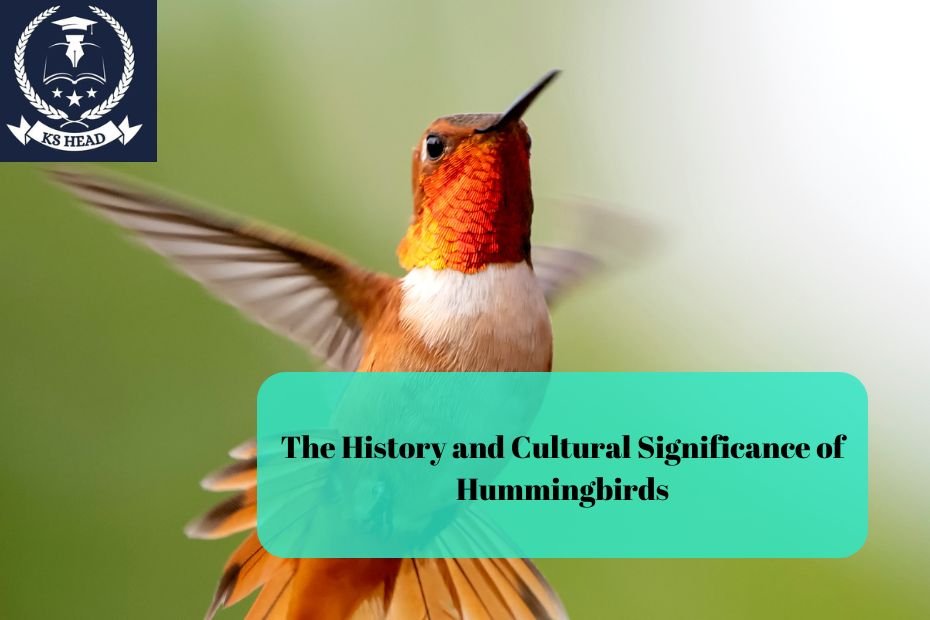Hummingbirds are one of nature’s most extraordinary creatures, admired for their beauty, agility, and remarkable characteristics. These tiny birds are not only biologically fascinating but also hold deep cultural and historical significance across various civilizations. Revered in folklore, celebrated in art, and symbolic in many traditions, hummingbirds have left a lasting impression on both ancient and modern cultures.
In this article, we will explore the evolution of hummingbirds, their unique biology, and how these diminutive creatures have shaped the myths, art, and traditions of cultures from the Americas to the world at large. Let’s dive into the mesmerizing world of hummingbirds!
1. The Evolution of Hummingbirds
Hummingbirds belong to the family Trochilidae and are native to the Americas, with most species found in tropical and subtropical regions. There are over 330 known species of hummingbirds, and they are primarily located in South and Central America, although a few species migrate to North America during the warmer months.
Origins and Fossil Evidence
The oldest known fossils of hummingbirds date back to about 30 million years, with most experts agreeing that they likely originated in Europe before spreading to the Americas. The species flourished in South America due to the diverse ecological habitats and abundant food sources found in these regions. Over time, their small size, iridescent feathers, and highly specialized flight patterns evolved to accommodate the tropical environments where they thrive today.
Hummingbirds are believed to have developed their unique hovering flight to feed on nectar from flowers. Their long, specialized bills and tongues allow them to access nectar deep within blooms, while their rapid wingbeats give them the ability to hover in place—an ability that sets them apart from most birds.
2. Unique Biology and Characteristics
Hummingbirds are truly biological marvels. They are the smallest bird species in the world, with some species, like the bee hummingbird, measuring only about 2 inches in length. However, despite their size, they possess extraordinary physical abilities.
Hovering and Flight
One of the most remarkable aspects of hummingbirds is their ability to hover in place while feeding. This is made possible by their unique wing structure, which allows them to rotate their wings in a figure-eight motion. This creates lift on both the upstroke and downstroke, giving them the agility to hover and even fly backward, a trait rare among birds.
Hummingbirds can beat their wings between 50 to 80 times per second, depending on the species. This rapid wing movement is necessary to maintain their hovering ability, and it also makes their distinctive humming sound, which gave the birds their name.
Metabolism and Energy Needs
Due to their high-energy lifestyle, hummingbirds have an exceptionally fast metabolism. They can consume up to twice their body weight in nectar each day to fuel their activities. In addition to nectar, hummingbirds feed on insects and spiders to obtain essential proteins and nutrients. Their quick digestion and energy usage mean they must feed almost constantly throughout the day to avoid starvation.
At night or during cold weather, hummingbirds enter a state called torpor, where their metabolic rate decreases significantly to conserve energy.
Iridescent Plumage
Hummingbirds are known for their dazzling iridescent feathers, which can appear to change color depending on the light. This shimmering effect is not due to pigment, but rather to microscopic platelets in the feather structure that reflect light. This feature helps hummingbirds attract mates and plays a role in their territorial behavior.
3. Hummingbirds in Ancient Civilizations
Throughout history, hummingbirds have held symbolic importance in various cultures, particularly in Central and South America, where they are most commonly found.
Aztec Civilization
In the Aztec civilization, hummingbirds were closely associated with the god Huitzilopochtli, the god of war and the sun. The Aztecs believed that warriors who died in battle would be reincarnated as hummingbirds, symbolizing courage, vitality, and the connection between life and the afterlife. The Aztec name for the hummingbird, huitzilin, was derived from this association with their deity.
The Aztecs also believed that hummingbirds carried messages between the living and the dead, further highlighting their spiritual importance. They would often adorn warriors and rulers with hummingbird feathers, which were considered sacred and powerful.
Inca Empire
The Inca Empire also held hummingbirds in high esteem. The birds were seen as symbols of resurrection and resilience, as their ability to migrate long distances mirrored the strength of the human spirit. In Inca mythology, hummingbirds were thought to represent the sun god, and they frequently appeared in art and textiles as representations of energy and renewal.
Native American Folklore
Among various Native American tribes, hummingbirds are often seen as symbols of joy, love, and beauty. Some tribes believed that hummingbirds carried love from one person to another, and they were thought to bring good luck to those who saw them. In Native American folklore, hummingbirds were also seen as healers or spirit guides that would help individuals navigate their emotional and spiritual journeys.
4. Hummingbirds in Modern Culture and Symbolism
While hummingbirds hold a rich place in ancient history, they continue to captivate modern audiences as symbols of beauty, resilience, and freedom.
Symbol of Resilience and Strength
Hummingbirds are often seen as symbols of endurance and perseverance, due to their ability to survive long migrations and their constant search for nourishment. Their ability to hover in place while maintaining intense physical activity is often interpreted as a metaphor for overcoming obstacles and persevering in life.
Representation of Joy and Beauty
Because of their bright plumage and graceful flight, hummingbirds are commonly associated with beauty and joy. They appear frequently in art, jewelry, and home decor as symbols of light-heartedness and the celebration of life’s simple pleasures.
Ecological Importance
In addition to their symbolic meanings, hummingbirds play a crucial role in pollination. As they feed on nectar, they help fertilize flowers, enabling plant reproduction. Many flowering plants have evolved alongside hummingbirds, developing bright, tubular flowers that cater specifically to the birds’ feeding habits. As such, hummingbirds are vital to the health of ecosystems, particularly in tropical regions.
5. Conservation Efforts and Challenges
Despite their widespread appeal, hummingbirds face several conservation challenges. Habitat loss, climate change, and urbanization are affecting their migratory patterns and food sources. Many species of hummingbirds are now considered vulnerable or endangered, particularly those with restricted ranges in South America.
Efforts to Protect Hummingbirds
Conservation groups are working to protect hummingbird habitats, particularly in Central and South America. Organizations like the Hummingbird Society and BirdLife International are focused on educating the public about the importance of preserving these birds’ natural environments.
In addition to habitat preservation, there are efforts to raise awareness about the use of pesticides and other chemicals that can harm hummingbird populations. Homeowners are encouraged to plant native flowers and maintain hummingbird feeders filled with sugar water to help support local populations.
What You Can Do to Help
If you want to contribute to hummingbird conservation efforts, consider the following steps:
- Plant Native Flowers: Choose plants that produce nectar-rich blooms to attract hummingbirds.
- Provide Clean Feeders: Keep hummingbird feeders clean and filled with fresh nectar (made from a mix of sugar and water, without dyes).
- Avoid Pesticides: Use organic gardening methods to ensure the safety of hummingbirds and other pollinators.
- Support Conservation Organizations: Donate to or volunteer with organizations focused on hummingbird preservation.
Conclusion
Hummingbirds are much more than just beautiful, agile birds. They are deeply rooted in the cultural and spiritual histories of ancient civilizations and continue to hold symbolic significance in modern culture. Their resilience, grace, and ecological importance make them treasured members of the natural world.
As we continue to learn more about these incredible creatures, it’s essential to protect their habitats and ensure that future generations can enjoy the sight of hummingbirds flitting through gardens and forests. By appreciating their history, understanding their significance, and supporting conservation efforts, we can help ensure that hummingbirds remain a symbol of joy and endurance for years to come.
FAQs
1. What do hummingbirds symbolize in different cultures?
Hummingbirds are often seen as symbols of joy, resilience, love, and spiritual connection. In Aztec culture, they were associated with the god of war, while Native American folklore linked them with healing and guidance.
2. How do hummingbirds hover in place?
Hummingbirds hover by rotating their wings in a figure-eight pattern, which allows them to generate lift on both the upstroke and downstroke of their wings.
3. Why are hummingbirds important for the environment?
Hummingbirds play a crucial role in pollination, helping many flowering plants reproduce. They are vital to maintaining healthy ecosystems, particularly in tropical regions.
4. Are any hummingbird species endangered?
Yes, several species of hummingbirds are considered endangered or vulnerable due to habitat loss, climate change, and urbanization. Conservation efforts are underway to protect their habitats.
5. What can I do to help hummingbirds?
You can help by planting nectar-rich flowers, maintaining clean hummingbird feeders, avoiding pesticides, and supporting conservation organizations that work to protect their habitats.

